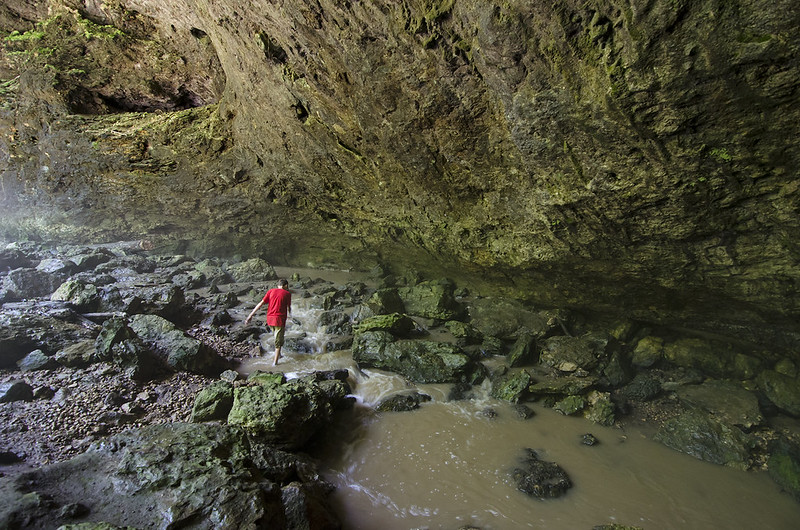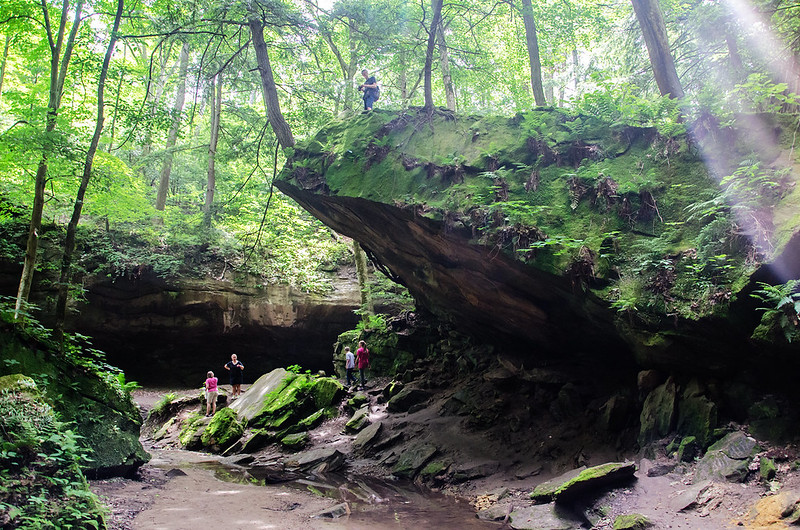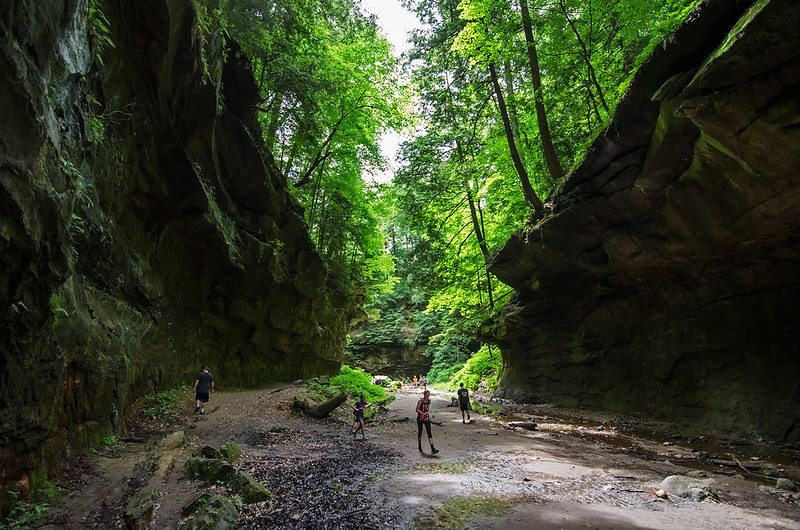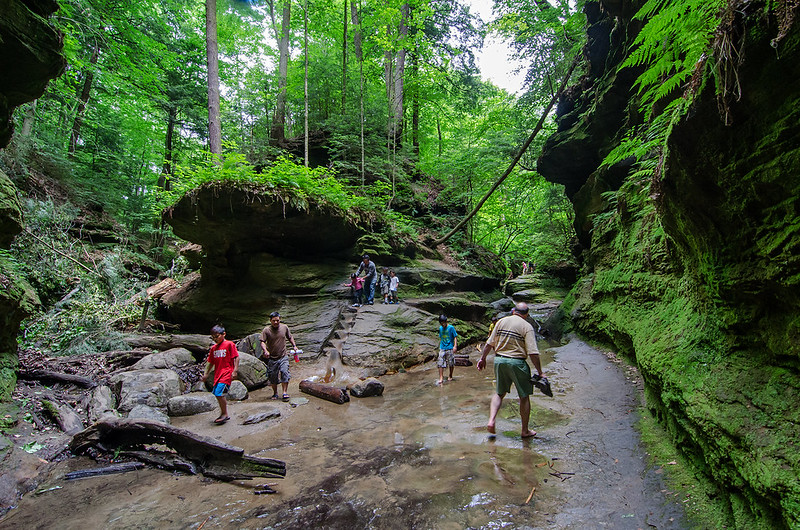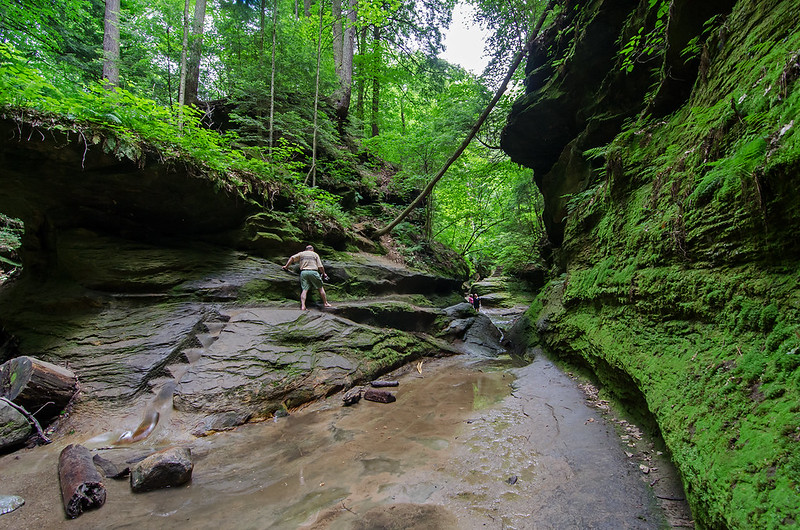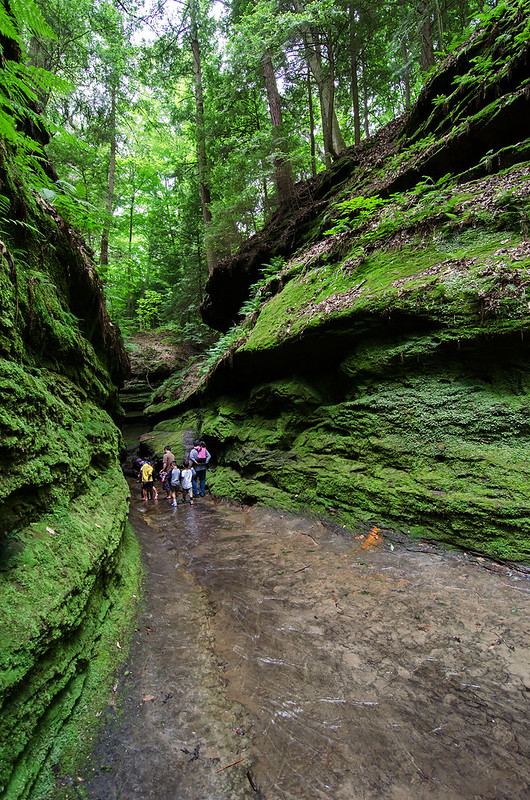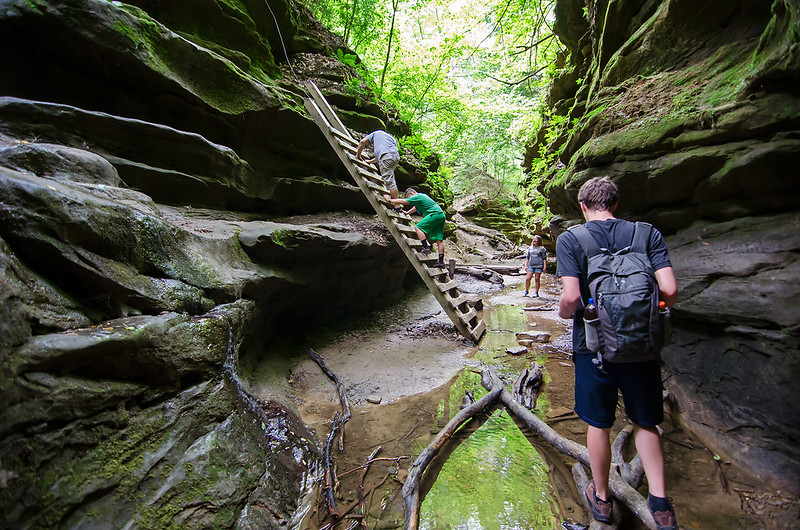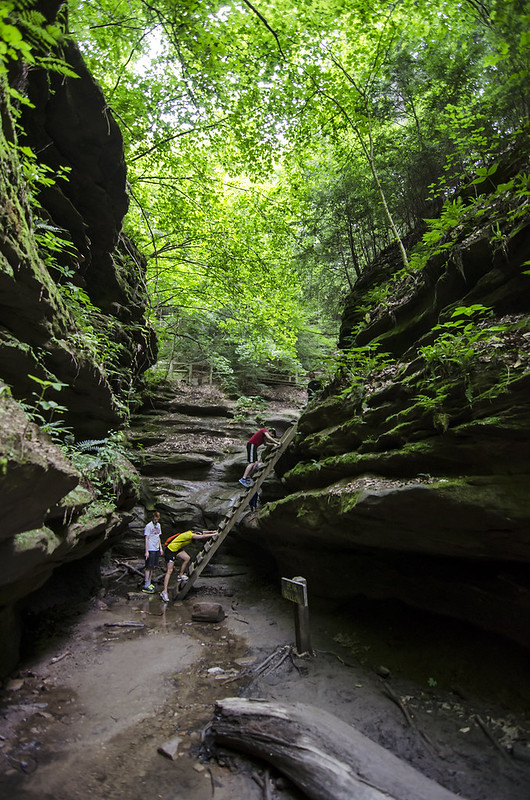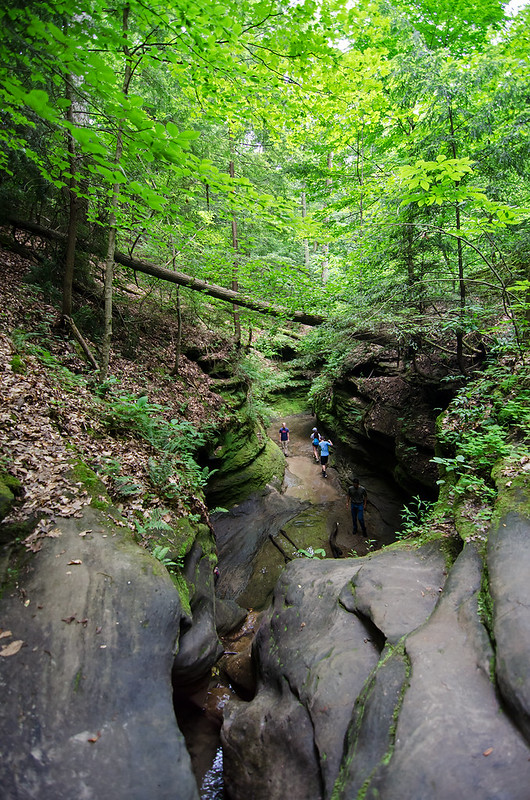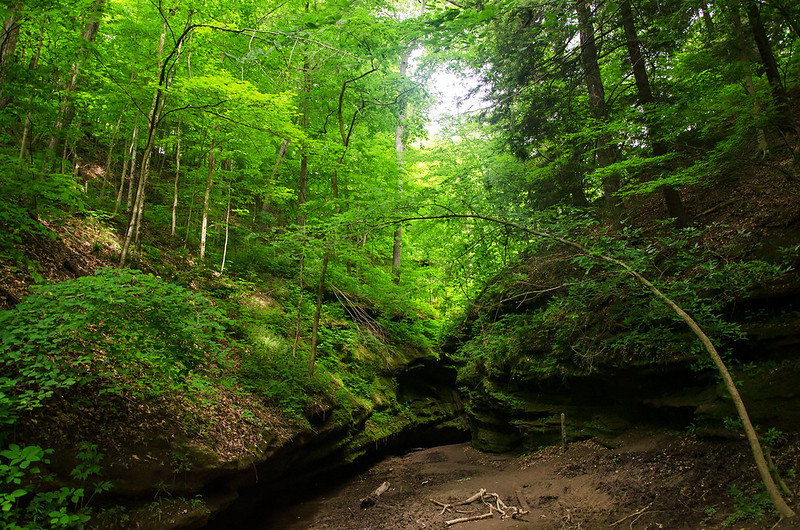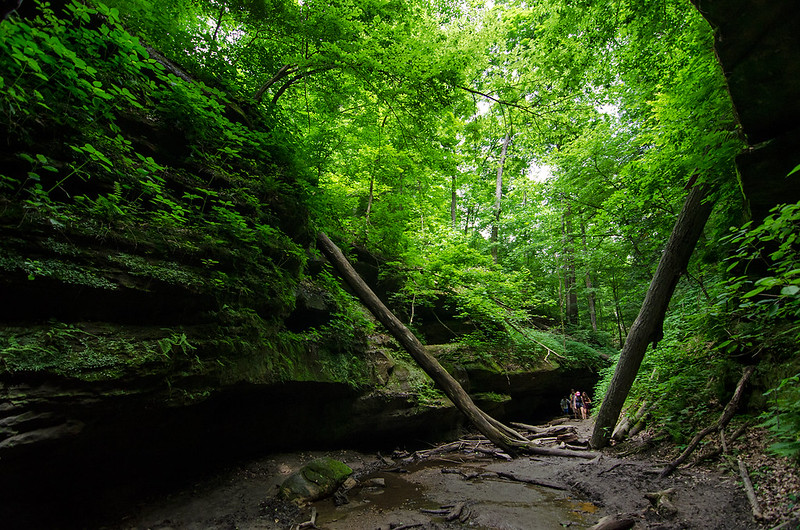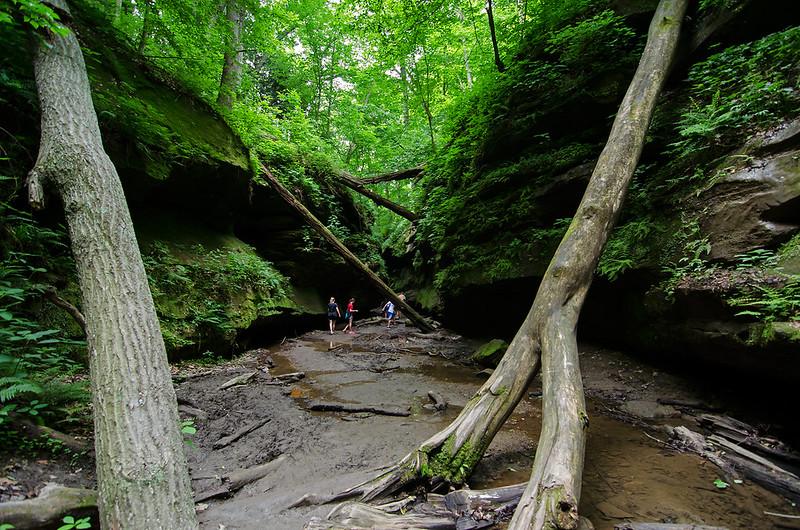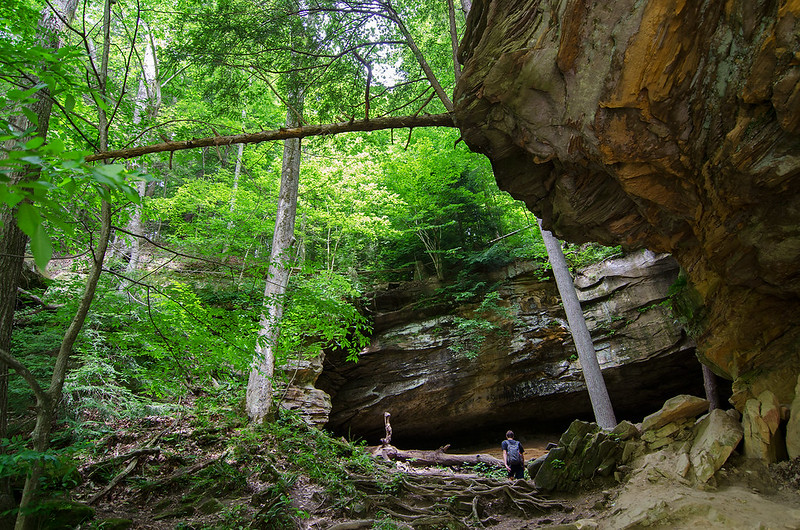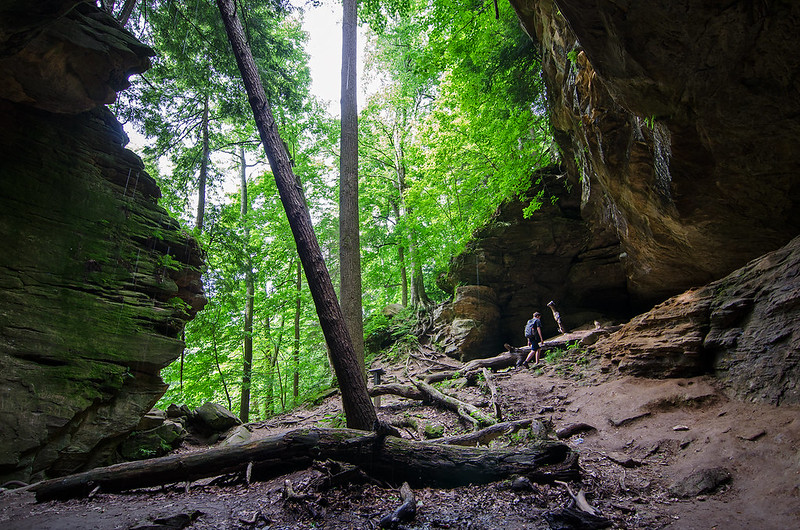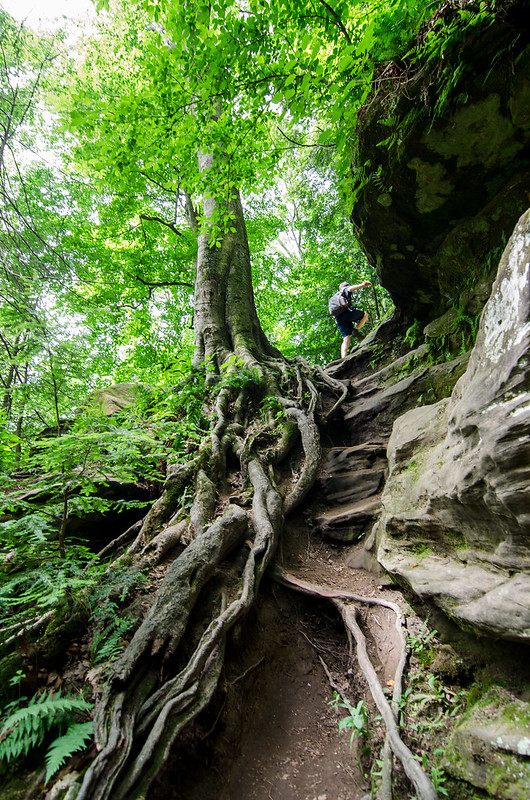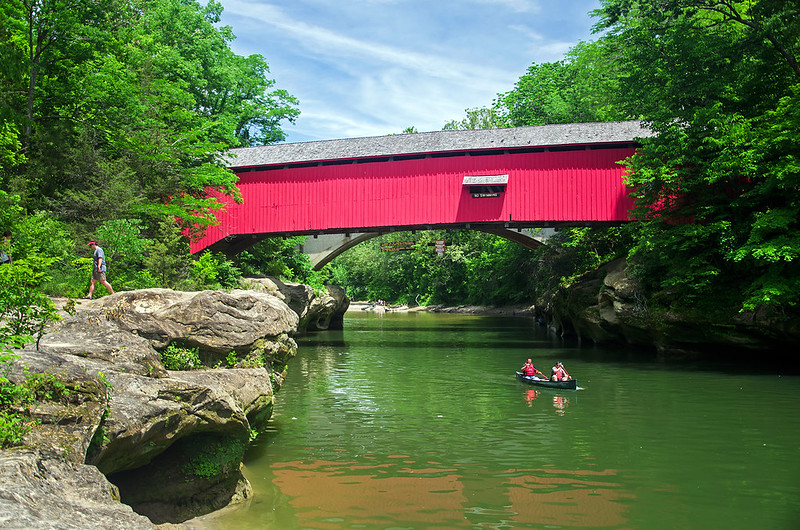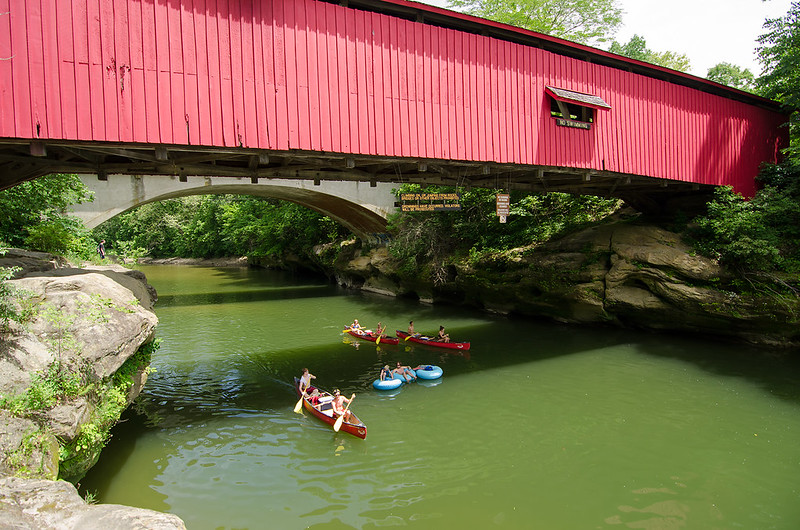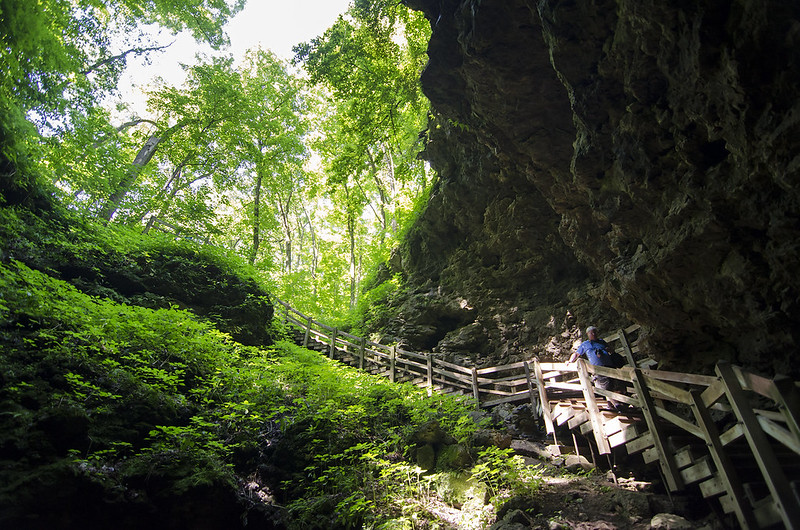
Looking more like a scene from Costa Rica, the landscape of Maquoketa Caves State Park is one of rugged cliffs, and lush green forest. Containing the most caves of any state park in Iowa, Maquoketa boasts 13 caves along its 6 miles of winding trails. Many caves have tight passages where crawling is a must, while several are large enough for uninhibited walking.
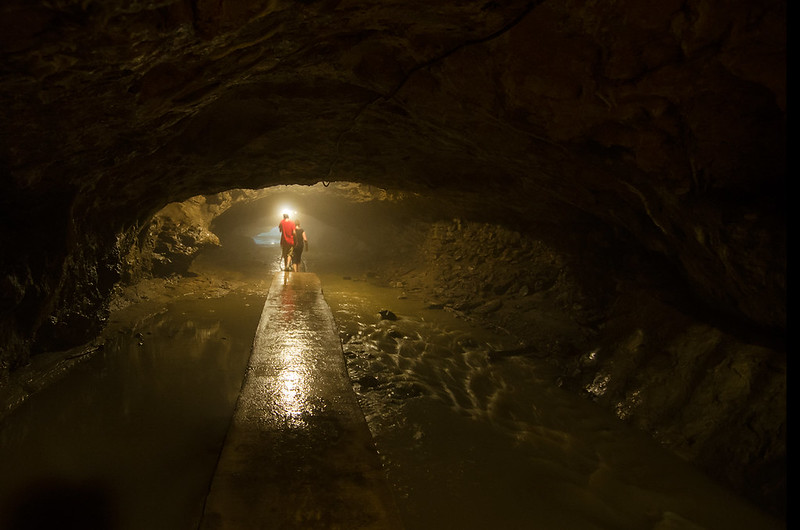
The largest cave of the park, at 1100 feet in length, is Dancehall Cave. A lighting system and concrete path makes this cave one of the most accessible in the park. A steam runs through the cave, and during one of our visits right after a rain, the path was covered in several inches of running water. Dozens of children walked through the silty water to explore the cave, all covered head to toe in mud, as if they were dipped in chocolate.
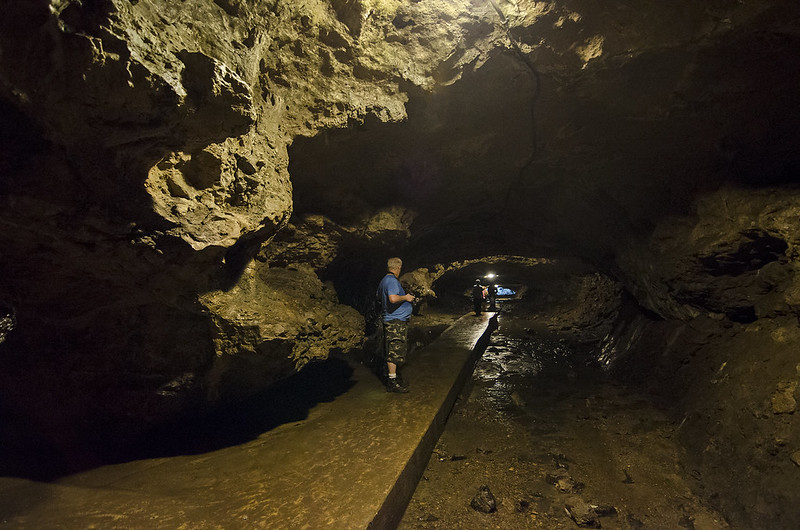
All the caves are self-guided, and open to the public. Each visitor to the park must stop at the ranger station to hear a bit about white nose syndrome, a fungal disease affecting bats. To keep this fungus from spreading to this cave system, visitors need to wipe their shoes on special mats, and should never wear the same clothes to multiple cave systems.
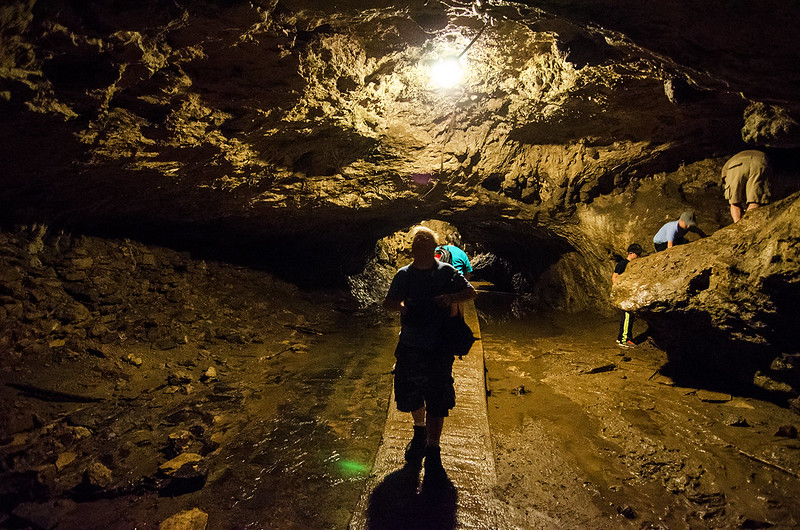
The caves are spread around the park, so as one hikes through the dense and rocky landscape, they happen upon cave after cave. All are open, but many require one to belly crawl and squeeze into very tight areas. Not being equipped for such an adventure, and because of the storms the night before, we only explored the caves where we could stand or crawl on all fours.
